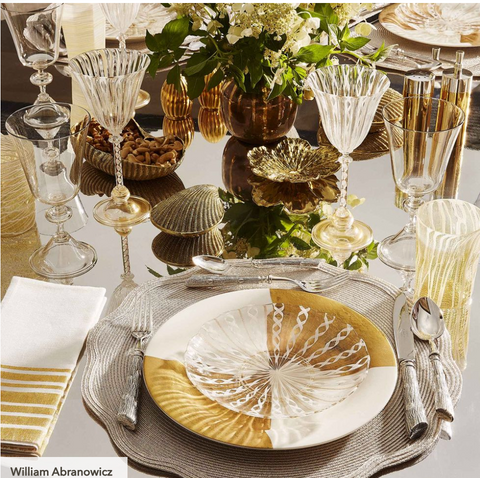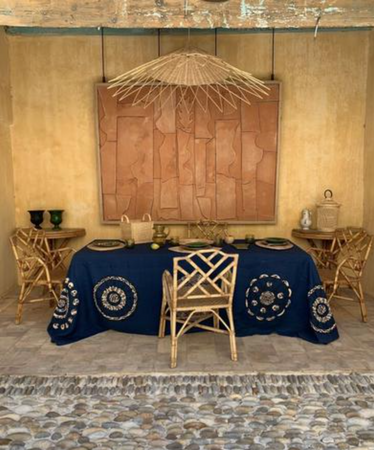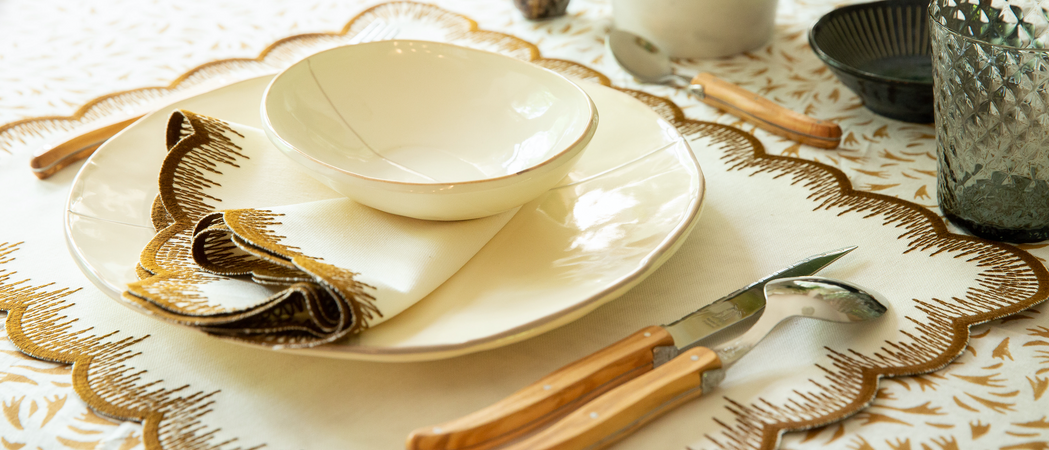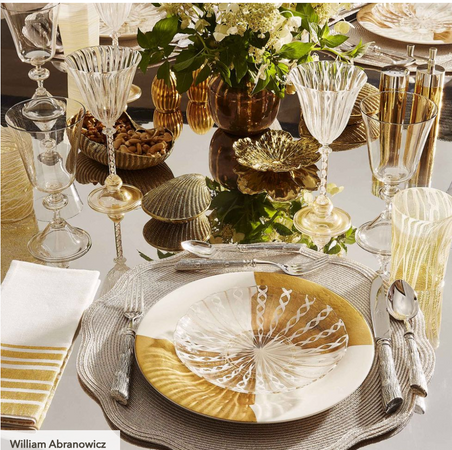Mastering the Art of Table Setting: From Casual Chic to Formal Elegance
In the world of dining and entertaining, the table setting plays a pivotal role in setting the tone and atmosphere of the meal. Whether you're hosting a casual brunch for close friends or an elegant dinner party, the way you set your table speaks volumes about the occasion. Transitioning from a casual to a formal table setting involves more than just swapping paper napkins for cloth ones; it's about understanding the balance between functionality, aesthetic, and etiquette. This guide will walk you through the essentials of mastering table settings for any occasion, ensuring you're well-prepared to host with confidence and style.

The art of table setting is akin to a symphony, where each element plays a crucial role in creating an harmonious dining experience. Whether it's a casual get-together or a formal gala, the way you set your table sets the stage for the evening. It's not just about aesthetics; it's about making guests feel welcomed, cherished, and in tune with the occasion's spirit. This expanded guide will provide a detailed walkthrough of elevating your table from casual chic to formal elegance, covering everything from flatware selection to the finesse of folding napkins.

Setting the Stage for Casual Dining
Casual dining embraces simplicity and functionality, with a focus on comfort and personal expression. The way you set your table can transform an ordinary meal into a memorable dining experience. Whether you're hosting a casual lunch or an opulent dinner party, the placement of utensils, dinnerware, and decor plays a crucial role in setting the mood. In a casual setting, the emphasis is on comfort and functionality, but that doesn't mean sacrificing style. Here are additional tips to enhance your casual table:
1- Tablecloth and Placemats: Begin with a clean, simple tablecloth or placemats. Cotton or linen materials are ideal for a relaxed feel. Choose colors and patterns that complement your dinnerware.
2- Flatware Placement: For a casual setting, place the dinner fork to the left of the plate, the knife to the right of the plate with the blade facing inward, and the spoon beside the knife. Flatware are arranged in the order of use from the outside in.
3- Dinner Plate and Charger: Although chargers are typically reserved for more formal settings, a casual event might skip the charger altogether. Place the dinner plate directly on the tablecloth or placemat.
4- Napkins: Place a cloth napkin to the left of the fork or on the dinner plate. A simple fold or a casual ring can add a touch of personality.
5- Glassware: A water glass is essential, positioned above the knife. For a casual setting with alcohol, a versatile wine glass or a beer glass can accompany the water glass, depending on the beverage choice.
6- Centerpieces and Decor: Keep centerpieces low and simple, such as a small vase of flowers or an unscented candle ( you don't want any scent to compete with the food) to encourage easy conversation across the table.

How to set a Semi-Formal table setting
Transitioning to a semi-formal table setting allows for elegance without the rigidity of a formal dinner. Here are ways to subtly elevate the dining experience from a casual table to a semi-formal table setting. A semi-formal table setting introduces elements of elegance while maintaining a relaxed atmosphere.
1- Tablecloth and Placemats: Upgrade to a higher-quality tablecloth or add a decorative runner atop a solid tablecloth for depth. Materials like damask or a heavier linen can add texture and a sense of occasion.
2- Flatware Placement: Add a salad fork to the left of the dinner fork and a dessert spoon above the plate, horizontal to the table edge with the handle facing right. If soup is served, include a soup spoon to the right of the knife.
3- Dinner Plate and Charger: Use a charger as the base to add an element of sophistication. Place the dinner plate on top of the charger. The charger remains on the table throughout most of the meal until the dessert is served.
4- Napkins: Use a more elaborate fold for your cloth napkins or employ napkin rings for an elegant touch. Position the napkin on the charger before guests arrive for a polished look.
5- Glassware: Introduce a water glass and two wine glasses (one for red and one for white) to cater to different beverage preferences. Glasses are arranged in a diagonal line from left to right in the order of use: water, white wine, red wine.
6- Centerpieces and Decor: Centerpieces can be slightly more elaborate but should not obstruct guests' views. Use medium-height flowers or a collection of candles for ambiance.

Mastering the Formal Table Setting
A formal table setting is the pinnacle of dining elegance, showcasing meticulous attention to detail and adherence to tradition. Think of dining at a very elegant environment where usually diner is served in different steps hence the many layered on the table setting. A formal table includes many pieces and utensils and usually ditch the placemats to replace them with chargers.
1- Tablecloth: Opt for a high-quality, crisp white tablecloth that drapes elegantly over the sides of the table. The tablecloth sets the stage for a sophisticated dining experience.
2- Flatware Placement: The formal setting includes a greater variety of utensils, catering to multiple courses. Starting from the outside and working in towards the plate: on the left, place the salad fork, dinner fork, and fish fork (if applicable); on the right, place the soup spoon, dinner knife, and fish knife (if applicable). The dessert spoon and cake fork are placed horizontally above the plate, spoon facing left and fork facing right.
3- Dinner Plate and Charger: The charger acts as an anchor for each place setting, with the dinner plate placed on top when the first course is served. Chargers are usually removed before the dessert course.
4- Napkins: Folded elegantly or placed within a decorative napkin ring, the napkin is positioned on the charger or to the left of the forks. Detailed folds add a touch of grandeur to the formal table.
5- Glassware: A formal setting includes a water glass, a champagne flute, a red wine glass, and a white wine glass, arranged from left to right in order of their use. The water glass is positioned directly above the knives, with the wine glasses fanned out to the right.
6- Centerpieces and Decor: Formal centerpieces should be dramatic yet not hinder conversation. Opt for low arrangements or tall, slender pieces that don't obstruct views across the table. Elegance and thematic consistency with the dinnerware and occasion are key.
Setting a table, whether for a casual meal or a formal dinner, is an art form that enhances the dining experience. It reflects not only the occasion but also the host's attention to detail and care for their guests. From the placement of the flatware to the choice of glassware and the fold of the napkin, every element contributes to the atmosphere of the gathering. With practice and a keen eye for detail, anyone can master the art of table setting, creating memorable dining experiences that guests will cherish.
By focusing on the specifics of utensil, plate, glassware placements, and incorporating the subtle nuances that differentiate casual, semi-formal, and formal settings, this guide provides a thorough overview for hosts of all levels of experience.
Commonly Asked Questions
If still have some doubts or questions about how to set the table from casual to formal? Consider these commonly asked questions.
What are the most important items to set up a table?
For any table setting the basic necessary items are a table cloth or table runner, a placemat, dinner plate, napkins, silverware (knives, forks, spoons), water glass, and wine glasses. If it's a formal table setting, you might include a charger and a place card. And finally, add a center piece arrangement or any accessory you prefer depending on the decor theme.
Where does the bread plate go?
The bread plate is placed to the left of the main dinner plate, just above the forks.
Where should the water glass be placed?
The water glass is positioned at the top right of the dinner plate, just above the knives. It is the first glass in the horizontal row of glasses when multiple glasses are used for different beverages.
What is the correct order of flatware placement?
The flatware is placed in the order of use, from the outside in, towards the dinner plate. On the left side of the plate, from the outside in, are the salad fork (if needed), dinner fork, and possibly a fish fork. On the right side, from the outside in, are the soup spoon (if needed), dinner knife, and possibly a fish knife. Remember to place the knives with the cutting side towards the plate. The dessert spoon (and sometimes a cake fork) is placed horizontally above the dinner plate, handle facing to the right and spoon head to the left.
15 Feb, 2024 ·










